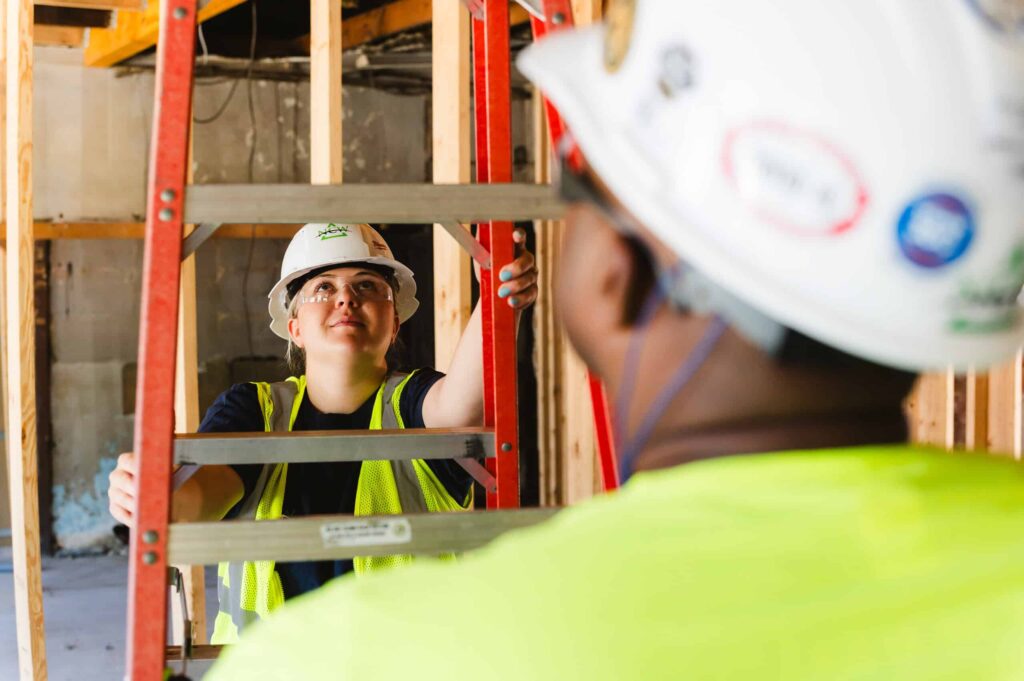You’d never start a remodel without a plan, pour a foundation without checking the soil, or wire a house without knowing the load. Yet most contractors treat their website like an afterthought — something to “get done” instead of something to engineer right. That’s why a strong contractor site strategy matters as much as the build itself — it’s the blueprint for consistent results and qualified leads.
At Tenaya360, we’ve learned that great contractor websites aren’t just designed — they’re built. They’re engineered with the same care, planning, and precision you bring to every project.
The Foundation Comes First
Most contractors rush to get a website live. You’re busy running jobs, managing crews, and chasing leads — planning feels like a luxury. But skipping the planning phase almost always costs more later.
We’ve seen it again and again: the site looks fine but attracts the wrong clients, doesn’t reflect your real capabilities, or fails to convert visitors into solid leads. That’s because it wasn’t strategically planned. Just like in construction, shortcuts early on lead to expensive do-overs later.
Planning isn’t glamorous, but it’s what separates a site that “looks nice” from one that builds your business.
What Planning Really Means
Before you build, you assess the ground, review the structure, and understand what you’re working with. The same logic applies to your website — and that’s where a clear contractor site strategy comes in.
Most contractors think they need a “website.” What they actually need is a lead generation system that happens to look like a website. That mindset shift changes everything.
When we plan your site, we start with four things that determine whether it works or not:
- Your business model – A contractor doing $50K kitchens needs a fast-moving site focused on volume and conversion. A contractor doing $500K renovations needs one built for trust and high-value leads.
- Your client acquisition cost – If you’re paying to drive traffic, but the site barely converts, your cost per lead skyrockets. A site built for conversion can cut that in half.
- Your competitive advantage – Every contractor says “quality and reliability.” We find what actually makes you different — your process, communication, craftsmanship — and make that the backbone of your site.
- Your client’s decision journey – Homeowners move through awareness, research, evaluation, and decision. We map content to each stage so your site supports them every step of the way.
Real Planning, Real Results
When we rebuilt RGC Construction’s website, we began with a focused contractor site strategy because their old site was invisible online and too generic to convert. They did incredible work — commercial build-outs, home remodels, tenant improvements — but their digital presence didn’t show it.
So we built a site like they’d build a project:
- Clear structure: Distinct sections for commercial and residential work with real project examples.
- Authentic visuals: Photos of their actual team and jobs — no stock images.
- Local clarity: Clear service areas from Concord to San Jose.
- SEO built in: Organized and written for search from day one.
Within weeks, they started getting high-quality leads via form submissions tagged: Google Search.” That’s the power of a site built with intention, not decoration.
Measure Twice, Code Once
There’s a reason builders say, “Measure twice, cut once.” Online, that means plan twice, build once.
Before writing code or designing pages, we map:
- User journeys: How different types of visitors (urgent repairs vs. future remodels) flow through your site.
- Content architecture: What matters most up front, what supports later, and what stays out of the way.
- Conversion points: Where and when to ask visitors to contact you.
- Technical specs: Hosting, load speed, uptime, mobile performance — the things that make or break reliability.
This phase isn’t flashy, but it’s what makes a site perform for years instead of months.
Building in Phases
Smart contractors build in stages — demo, frame, rough-in, finish. Our phased approach follows the same logic as a contractor site strategy, ensuring no detail is skipped.
Phase 1: Discovery – We dig into how your business actually works — lead sources, project size, margins, and goals. We audit competitors and your current site to find opportunities.
Phase 2: Architecture – Like blueprints for a house, we create wireframes that show exactly what goes where and why. We plan navigation, content flow, and mobile layouts so it all functions logically.
Phase 3: Design & Content – Now we make it beautiful and functional. The goal isn’t trendy design; it’s trust, clarity, and conversion. Your site should look as professional as your best work, feel authentic to your brand, and guide visitors naturally toward contacting you.
Phase 4: Development & Testing – We test load speeds, fix bugs, check forms, and ensure everything works on every device. We also handle SEO, security, and analytics setup so your foundation is solid.
Ongoing Inspection
Just like any build, your website needs regular check-ins. Analytics show what’s working — where people come from, what they click, and where they drop off.
A San Mateo electrician learned his high-traffic residential page wasn’t converting. The reason? It had photos but no process, pricing, or timelines. Once we added that info, his qualified leads doubled in a month.
Data only helps if you act on it. We help you read the numbers, find the issues, and keep improving.
Common Shortcuts That Cost You Later
- Generic templates that don’t fit your business model.
- Weak mobile experience that turns away 60% of visitors.
- Slow load times that drive people straight to competitors.
- Missing calls to action that leave visitors stranded.
- No content strategy, so your site goes stale.
- Treating your site as separate from your business, instead of a core part of it.
These are the online equivalents of skipping permits or using cheap materials. They work short-term but fail when it matters most.
Materials Matter
We only use tools we trust:
- WordPress with custom builds for flexibility and ownership.
- High-speed, secure hosting with near-zero downtime.
- SSL and top-tier security for trust and ranking.
- Easy content management so you can update projects anytime.
- Lead tracking and analytics that show what’s actually driving results.
It’s not the cheapest way to build — but like any quality project, cutting corners costs more later.
The ROI of Planning
When your website is built strategically, you stop chasing low-budget jobs and start attracting clients who value craftsmanship. Planning helps you:
- Attract the right leads and filter out tire-kickers.
- Increase average project values.
- Close more deals because clients already trust you.
- Keep your portfolio current without hiring a developer.
That’s the return on building your site the right way.
Your Digital Blueprint Starts Here
You already know what good planning does on a job site — fewer mistakes, smoother workflows, happier clients. Your website deserves the same treatment.
The contractors booking premium projects months out didn’t get lucky — they built a strong digital foundation from the start.
Want to see how a solid contractor site strategy looks in practice? Check out this example from a Bay Area design-build firm.
If you’re ready to plan your website like a real project, let’s talk. We’ll map out where you are, where you want to go, and how to get there — no shortcuts, no fluff, just solid planning that leads to solid results.






